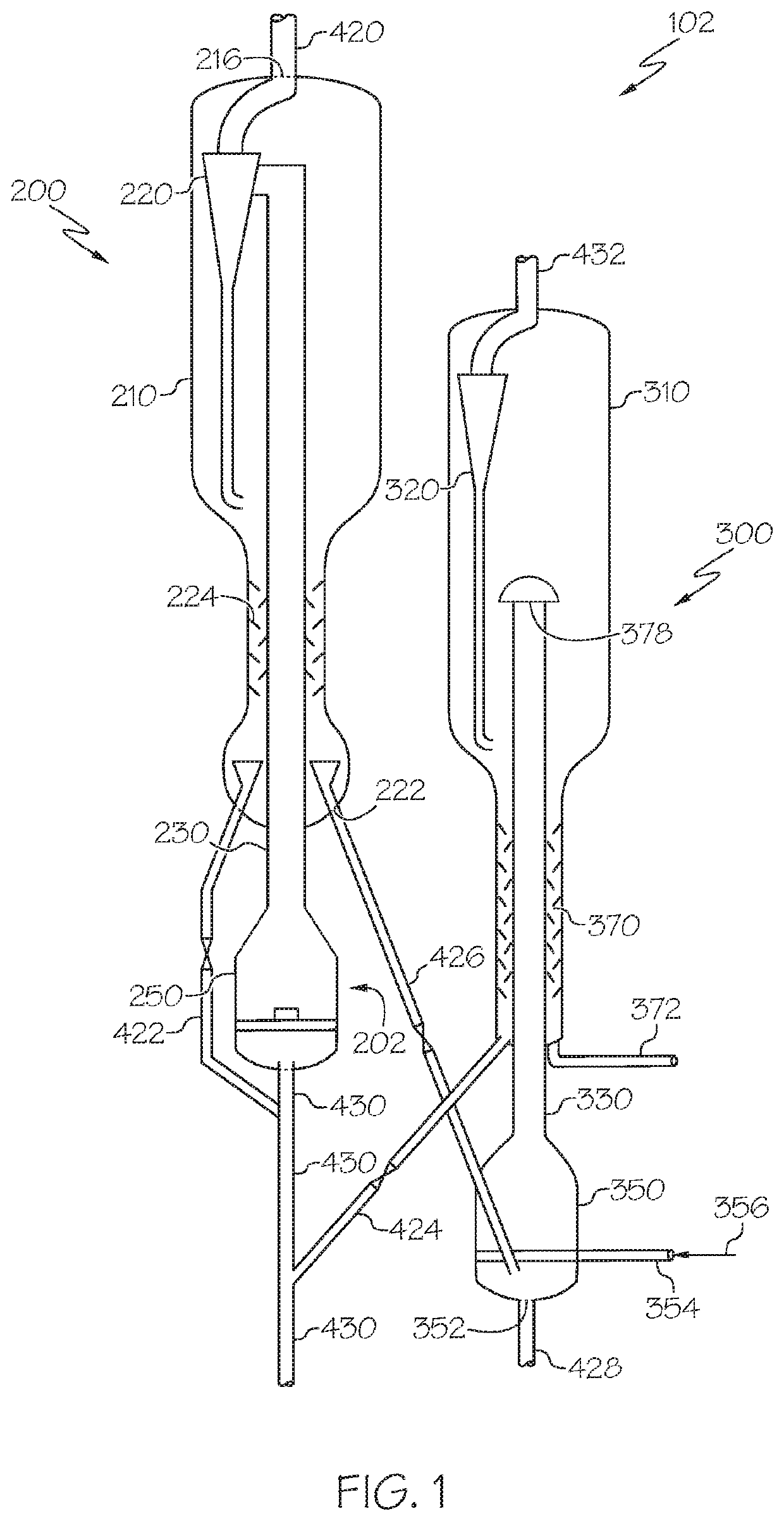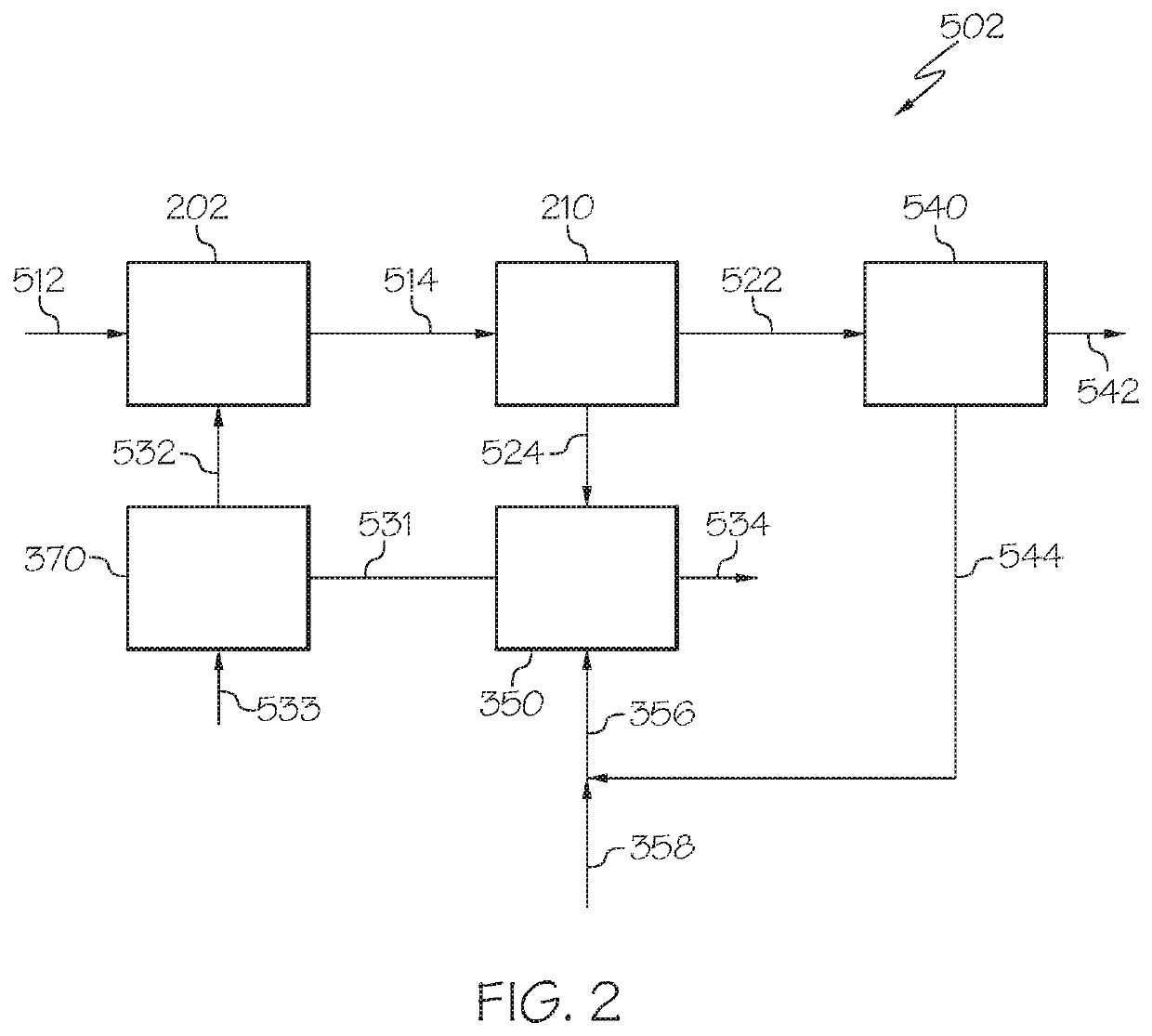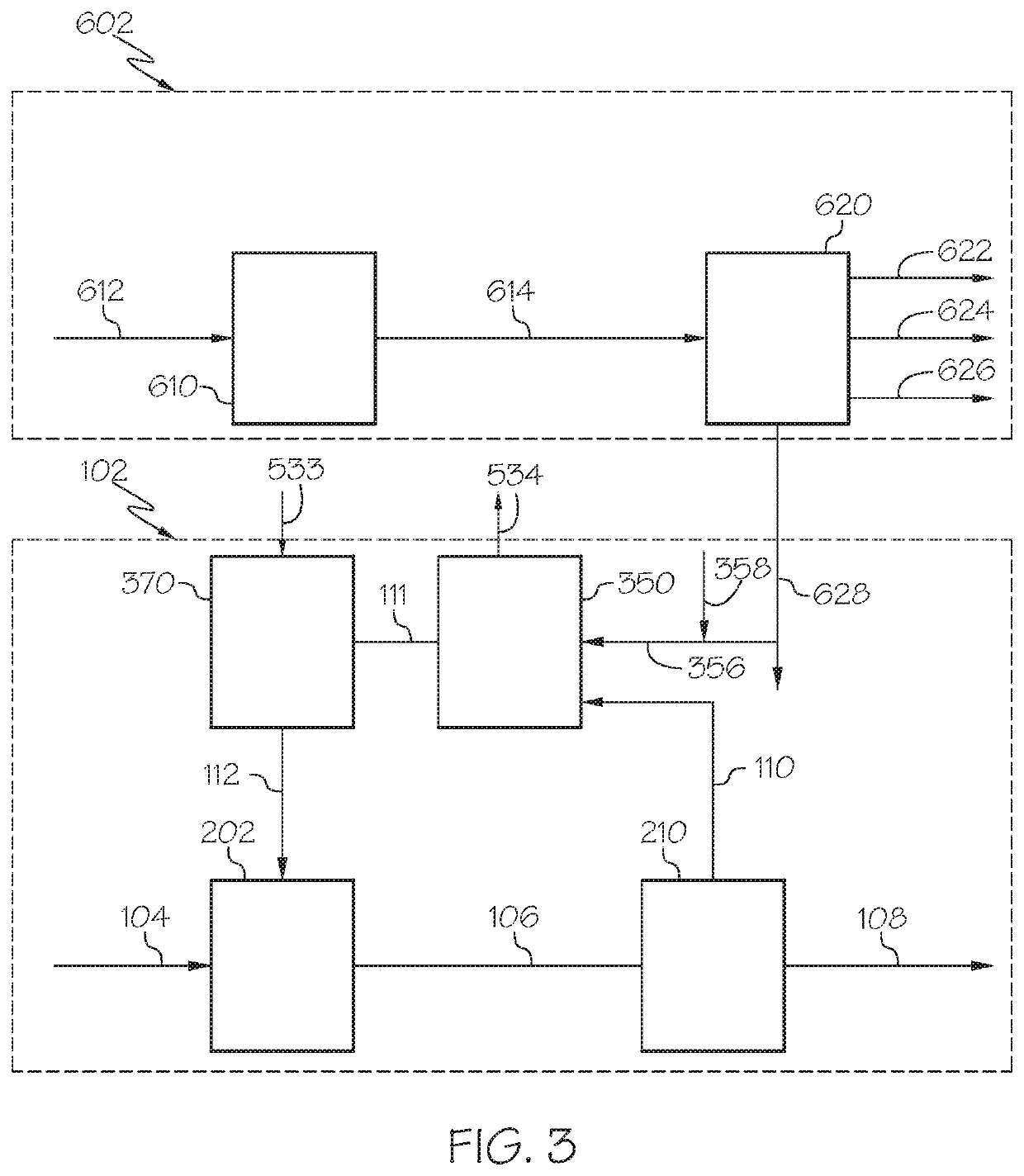Chemical processing utilizing hydrogen containing supplemental fuel for catalyst processing
a catalyst and hydrogen containing technology, applied in the direction of catalyst regeneration/reactivation, physical/chemical process catalysts, metal/metal-oxide/metal-hydroxide catalysts, etc., can solve the problem that the heat provided by combustion of coke deposits may not be sufficient to propagate endothermic reactions, reduce the activity of catalysts, increase the operating costs of reactor systems, etc. problem, to achieve the effect of reducing catalyst activity, reducing catalyst activity, and reducing the cost of catalys
- Summary
- Abstract
- Description
- Claims
- Application Information
AI Technical Summary
Benefits of technology
Problems solved by technology
Method used
Image
Examples
example 1
ehydrogenation—Effects of Hydrogen Content of Supplemental Fuel on Propane Conversion
[0071]In Example 1, the effects of the concentration of hydrogen in the supplemental fuel stream on the conversion of propane in the propane dehydrogenation reactor system were evaluated. The propane dehydrogenation reactions were conducted using a Davidson Circulating Riser (DCR) pilot plant unit obtained from Grace Davidson and having an upflow fluidized reactor portion and a catalyst processing portion. The DCR unit was modified to allow in-situ fuel combustion in the catalyst processing portion. Each reaction run 1A-1D was conducted with 4100 grams of freshly loaded catalyst comprising platinum and gallium supported on an alumina-containing silica carrier. The inlet temperature to the riser reactor of the DCR unit was controlled at 630° C. and the pressure was set to 13 psig. The propane feed was an HD-5 propane feed with around 30 parts per million (ppm) sulfur on a molar basis. The propane fee...
example 2
ehydrogenation—Effect of Hydrogen Content of Supplemental Fuel on Propane Conversion at High Heat Input
[0076]In Example 2, the effects of hydrogen concentration of the supplemental fuel stream on propane conversion in a propane dehydrogenation reactor system operating at high heat input were valuated. The propane dehydrogenation reactions were conducted in the DCR unit described in Example 1. In Example 2, the catalyst processing was conducted at high heat input which was accomplished by increasing the supplemental fuel stream flow rate to 3 times the supplemental fuel stream flow rate of Example 1. The propane dehydrogenation reactions were conducted at constant heat input of about 4,700 BTU / hour (4.7 KBTU / hr). All other operating parameters were the same. The propane dehydrogenation reactions were conducted using supplemental fuel streams comprising hydrogen and methane. For reaction runs 2A-2D, the molar concentration of hydrogen in the supplemental fuel stream was increased from...
example 3
Propane Dehydrogenation—Effects of Hydrogen Concentration in the Supplemental Fuel Stream
[0081]In Example 3, the effects of changing the hydrogen concentration in the supplemental fuel stream on the propane conversion was further studied using a lab scale propane dehydrogenation reactor system. The propane dehydrogenation reactions of Example 3 were conducted using a lab scale fixed bed testing rig containing the same catalyst previously described in Example 1. The fixed bed reactor system was alternated between propane dehydrogenation operation and catalyst reactivation to simulate reaction / catalyst processing cycles.
[0082]During propane dehydrogenation reaction operation, a feed stream comprising 90 mol % propane and 10 mol % nitrogen was introduced to the fixed bed reactor at a propane weight hourly space velocity (WHSV) of 10 hr−1. The propane dehydrogenation reactions were conducted at a reaction temperature of 625° C. at ambient pressure. Each reaction step of the dehydrogenat...
PUM
| Property | Measurement | Unit |
|---|---|---|
| temperature | aaaaa | aaaaa |
| temperatures | aaaaa | aaaaa |
| temperatures | aaaaa | aaaaa |
Abstract
Description
Claims
Application Information
 Login to View More
Login to View More - R&D
- Intellectual Property
- Life Sciences
- Materials
- Tech Scout
- Unparalleled Data Quality
- Higher Quality Content
- 60% Fewer Hallucinations
Browse by: Latest US Patents, China's latest patents, Technical Efficacy Thesaurus, Application Domain, Technology Topic, Popular Technical Reports.
© 2025 PatSnap. All rights reserved.Legal|Privacy policy|Modern Slavery Act Transparency Statement|Sitemap|About US| Contact US: help@patsnap.com



